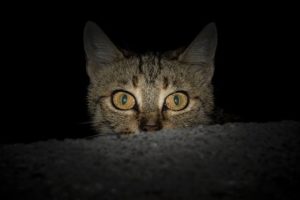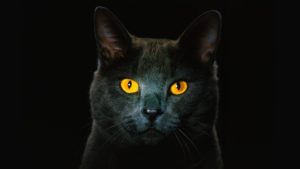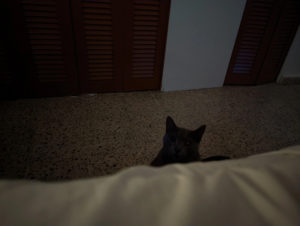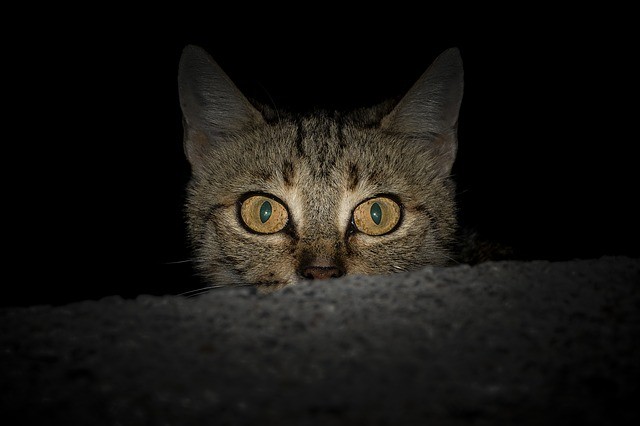
Cats have always captivated the human imagination with their mysterious and elusive nature. One of the most fascinating aspects of feline physiology is their ability to see clearly in the dark. While humans rely on artificial lighting to navigate through the night, cats seem to effortlessly maneuver in low-light conditions. But what is the secret behind their exceptional night vision? In this article, we will delve into the world of feline vision and uncover the scientific explanations behind their remarkable ability to see in the dark.
The Unique Eyes of Cats
To understand how cats can see clearly at night, we must first explore the structure of their eyes. Cats possess a set of eyes that are specifically adapted to enhance their vision in low-light conditions. One of the key differences between feline and human eyes lies in the distribution of photoreceptor cells. Cats have a higher number of rods, which are responsible for night vision, peripheral vision, and motion sensing. On the other hand, humans possess more cones, which enable us to perceive colors and have better vision in daylight[^1^].
Comparing Human and Cat Vision
To truly grasp the disparity between human and feline vision, it is helpful to visualize the world through a cat’s eyes. In 2013, artist Nickolay Lamm created a series of images that beautifully illustrate the differences in perception between humans and cats. These images provide valuable insights into the unique visual experience of our feline friends[^1^].

As depicted in Lamm’s images, cats see the world predominantly in shades of gray, which is ideal for low-light environments. Their vision is optimized for detecting movement and tracking prey, making them highly efficient hunters. While cats may not perceive the vibrant colors that humans do, they compensate for this with their exceptional night vision[^1^].
The Science Behind Cat Night Vision
The ability of cats to see clearly in the dark can be attributed to several factors. One crucial aspect is the size of their corneas and pupils. Cats have larger corneas and pupils compared to humans, allowing more light to enter their eyes. This extra light enables them to navigate in dimly lit environments and perceive objects that would be virtually invisible to us[^2^].
Another significant advantage cats have is the presence of vertical slit pupils. Researchers at the University of California, Berkeley have found that animals with this type of pupil, including cats, are more likely to be ambush predators. Cats’ ancestors were solitary hunters that relied on stealth and surprise to catch their prey. The vertically slit pupils help cats estimate the distance to their target accurately, giving them an edge in hunting[^2^].
Cats: Crepuscular Hunters
Contrary to popular belief, cats are not nocturnal creatures. Instead, they are classified as crepuscular animals, which means they are most active during the twilight hours of dawn and dusk. This behavior aligns with the natural hunting patterns of their ancestors. At these times, many small animals that serve as prey become more active, providing ample opportunities for cats to hunt and satisfy their carnivorous instincts[^2^].
The Advantage of Slit Pupils

The vertical slit pupils found in cats provide them with additional advantages beyond their ability to estimate distance accurately. These pupils also allow cats to adjust the intensity of light entering their eyes. According to Dr. Richard E. Goldstein, chief medical officer at the Animal Medical Center in New York City, cats can alter the intensity of light falling on their retinas by a staggering 135-fold, compared to only tenfold in humans[^2^].
This ability to modulate light reception enables cats to adapt quickly to changing light conditions, whether it be in dimly lit environments or bright sunlight. The circular shape of their pupils allows them to constrict in bright light and dilate in the dark, optimizing their vision for different lighting conditions[^2^].
The Power of Cat Vision
Although cats see the world predominantly in shades of gray, their vision is far from limited. In fact, their eyesight is exceptionally powerful due to the strategic shape and movement of their eyes. Cats possess a specialized reflective layer called the tapetum lucidum, which enhances their ability to see in low light. This layer reflects light back through the retina, giving the photoreceptor cells a second chance to detect it, effectively amplifying their vision[^2^].
With their remarkable eyesight, cats can spot even the tiniest movements in the dark, making them formidable predators. Their night vision, combined with acute hearing and a highly developed sense of smell, allows them to navigate their surroundings with unparalleled precision and grace[^2^].
Human Vision vs. Cat Vision
While cats undeniably have superior night vision, humans still have a visual advantage of their own. Humans possess better visual acuity, which refers to the clarity of vision, compared to cats. Our ability to perceive fine details and distinguish between different shapes and colors surpasses that of our feline companions[^2^]. However, when it comes to seeing in the dark, cats reign supreme.
The Perfect Team: Humans and Cats
As pet owners, we can appreciate the unique qualities of our feline friends, including their exceptional night vision. Humans and cats make the perfect team, each contributing their own strengths to the relationship. While we rely on our visual acuity and provide a safe and comfortable environment for our furry companions, cats bring their keen senses and remarkable night vision, ensuring that no prey goes unnoticed and no intruder goes undetected[^2^].
In conclusion, cats possess an extraordinary ability to see clearly in the dark. Their large corneas and pupils, together with their vertical slit pupils, enable them to gather more light and estimate distances accurately. With their unique visual adaptations, cats can navigate their surroundings effortlessly, even in low-light conditions. While humans may have superior visual acuity, cats’ night vision capabilities are truly remarkable, making them exceptional hunters and captivating companions.
So, the next time you catch your feline friend silently observing the darkness, remember that they are seeing a world that remains hidden to us, a world of shadows and movement that keeps their instincts sharp and their senses alive.
